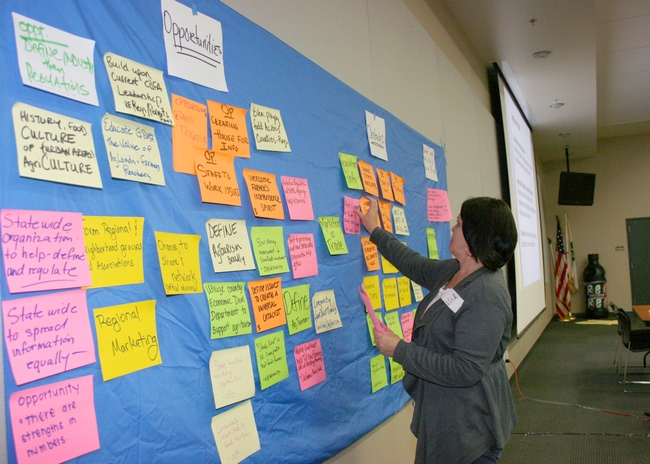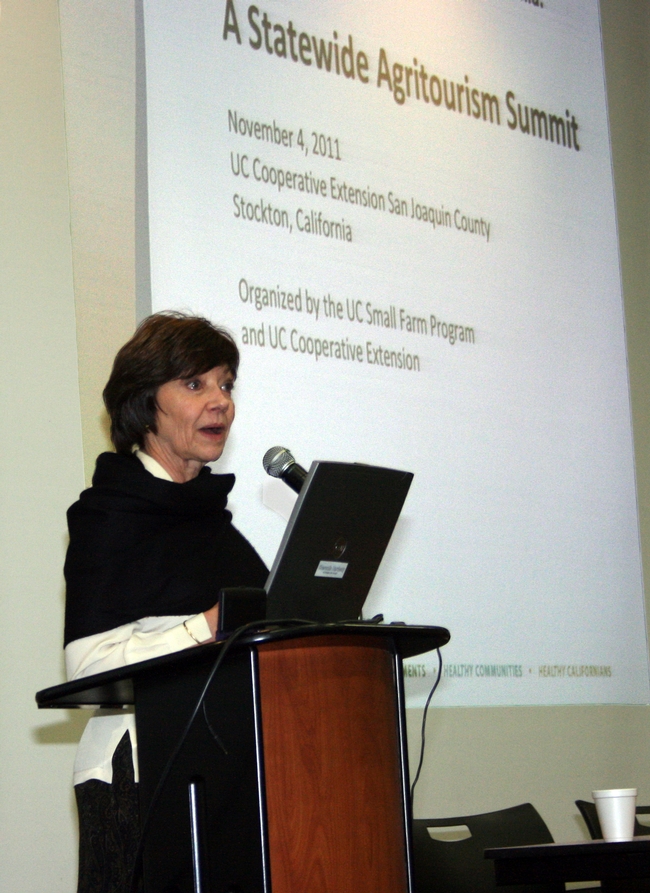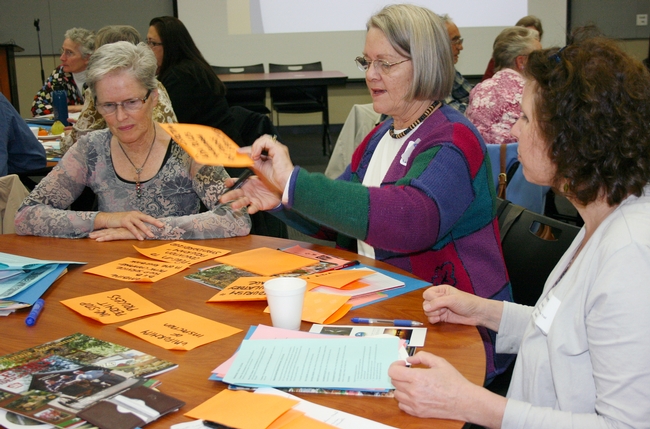At a recent statewide summit, California agritourism leaders overwhelmingly agreed that a statewide organization would be a major step toward improving agritourism support in the California.

Statewide associations can develop and share resources and provide a unified voice for a growing agritourism industry. Many other states have developed statewide agritourism associations which help foster collaboration among county and state agencies, agritourism operators, local agritourism associations, tourism professionals and other supporters and partners.
Local organizations, local promotions, local regulations
California agritourism is primarily organized, regulated and promoted at the county or local level, resulting in a diversity of local organizational structures and branding efforts. The county-based regulatory system also leads to major differences in permitting, regulations and fee structures throughout the state.

Although some local agritourism associations are successful in drawing tourists to their regions and benefit their members by offering networking, training and marketing opportunities, many groups struggle with lack of organizational and marketing expertise and minimal financial or staff support. Many individual agritourism operators and potential operators in California are in regions with no supportive trade or marketing organization. Collaboration among local agritourism associations and county staff responsible for regulating or developing agritourism is weak, with wide disparities in regulations and agritourism support between different counties.
California's 58 counties bear the primary responsibility for permitting and regulating agritourism operations on agricultural land within their boundaries. The counties often struggle with creating allowances and ease of permitting for agritourism businesses, while ensuring that agritourism is a supplemental (rather than primary) activity on a commercial farm or ranch. Regulations also must ensure that agricultural production and local residents are not adversely affected by tourism.
Each county’s staff must research the general plans and zoning ordinances of other counties when updating their own, but there is no central clearinghouse for this information. Interpretations and enforcement of state-level environmental health and direct marketing regulations, which affect agritourism enterprises, also vary widely among the counties.
At least sixteen other states have organized statewide agritourism associations, most of these involving partnerships between state departments of agriculture or tourism, university extension and agritourism operators. At least 23 states have enacted statutes that address agritourism, varying from liability protections for agritourism operators to tax credits to zoning requirements. Many other states include agritourism promotion and resources for operators on state department of agriculture or tourism websites.
Views from the summit
At the statewide agritourism summit, organized by the UC Small Farm Program and UC Cooperative Extension Nov. 4 in Stockton, the approximately 120 participants talked together in regional breakout groups, including one group representing statewide interests. Six of the seven groups agreed that a statewide agritourism organization would be an important part of building better support for California agritourism.

- Facilitate the sharing of resources, ideas and best practices among regional and local agritourism organizations
- Create a resource clearinghouse of county policies, ordinances, regulations, fee structures, procedures, guides and general plan language related to agritourism; and foster more communication about these issues among county planners and stakeholders
- Participate in state-level discussions and planning committees about issues relating to agritourism and advocate for the interests of agritourism operators in statewide regulatory changes. Issues mentioned by summit participants as needing change included:
- Easing direct marketing laws to allow cooperative marketing or reselling of local produce with exemptions from strict food facility environmental health regulations
- Limited liability statutes for agritourism
- Easing environmental health requirements for small-scale non-potentially-hazardous food processing
- Cross-county standardization of interpretation and enforcement of state regulations
- Create partnerships with state agencies including the CDFA Division of Fairs and Expositions to promote agricultural education and use by farmers and ranchers of county and state fair facilities for mutual benefit
- Foster better connections between agritourism operators and county and state economic development departments
- Create educational materials and help educate city, county and state government staff, elected officials, chambers of commerce, convention and visitor bureaus, etc., about agritourism
- Organize a statewide agritourism promotion campaign/brand which supports regional branding campaigns
- Provide staff to coordinate all these activities and to maintain communications among all those involved in California agritourism
Potential obstacles and issues facing the formation of a statewide agritourism organization were also brought up in the group discussions:
- Defining and explaining organization’s benefits and value to potential members
- Recognizing and working with the limits to farmers’ time to participate
- Funding the organization while keeping membership affordable
- Recognize the need for state unity vs. the need for county regulatory autonomy
- Defining agritourism
- Deciding on and defining organization’s priorities
- Maintaining membership control of organization
What's next?
The UC Small Farm Program, working with the UC ANR-based Agritourism and Nature Tourism Workgroup and other partners, is committed to helping coordinate further discussion among everyone involved in California agritourism about the next steps for building effective statewide support.
The summit organizers, in cooperation with representatives from interested state agencies and organizations, are preparing a white paper to explore the potential process for organizing a statewide agritourism association in California.
Formation of a statewide organization might begin with agreement on a sponsoring agency for a start-up group, would need start-up funding, and would involve wide discussion with potential membership about needs, issues and organizational structure.
Read more:
Presentations, handouts, and small group reports from the summit are available on the UC Small Farm Program’s website. Summit participants also received contact information for participants who agreed to share their information, in order to better facilitate networking and communication.
Back to the newsletter: Find more Small Farm News articles from our Vol 1. 2012 edition.